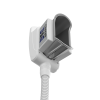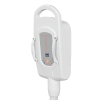
Reduza até 43% da gordura localizada dos seus pacientes com tecnologia de ponta
Descubra como ter mais lucros,
segurança e praticidade no
atendimento dos seus clientes!


Ao longo de seus mais de 30 anos no mercado de equipamentos eletromédicos, a Ibramed promove as melhores soluções em equipamentos que facilitam os tratamentos realizados por clínicas em todo o Brasil.
Com os equipamentos Ibramed, além do acesso à tecnologia de ponta, as clínicas conseguem aumentar sua capacidade de atendimento, segurança nos tratamentos, retenção e lucratividade de clientes.

Por que escolher o Polarys para sua clínica de estética

4 Modalidades
terapêuticas
O Polarys conta com 4 modalidades de procedimento terapêutico que se adaptam as necessidades dos pacientes caso a caso.
- Criolipólise Convencional
- Criolipólise de Preparo
- Criolipólise de Reperfusão
- Criolipólise de Contraste

2 Aplicadores com controle independente
Com nossos dois aplicadores é possível tratar áreas diferentes do corpo e conforme a necessidade de cada paciente.

Aquecimento e Resfriamento estáveis
Sistema de resfriamento eficaz que garante a estabilidade da temperatura durante o uso simultâneo de amos os aplicadores. O Polarys permite o ajuste da temperatura no display, evitando efeitos adversos.
Equipamentos que você pode confiar

A Ibramed possui as principais certificações e registros cobrados pelos órgãos competentes para poder fabricar e comercializar seus equipamentos eletromédicos.
Certificações e registros válidos tanto no Brasil quanto no exterior. Por isso, ao escolher equipamentos para sua clínica, escolha a Ibramed como sua fornecedora.

Diferentes modos de vácuo
para maior conforto
Possui 4 modos de vácuo contínuo e 3 modos de vácuo pulsando, o que garante tratamento de áreas mais doloridas e compactas com maior conforto e menor risco de equimoses.
Ibramed ©️ 2024 | V4 Company – Colli & Co